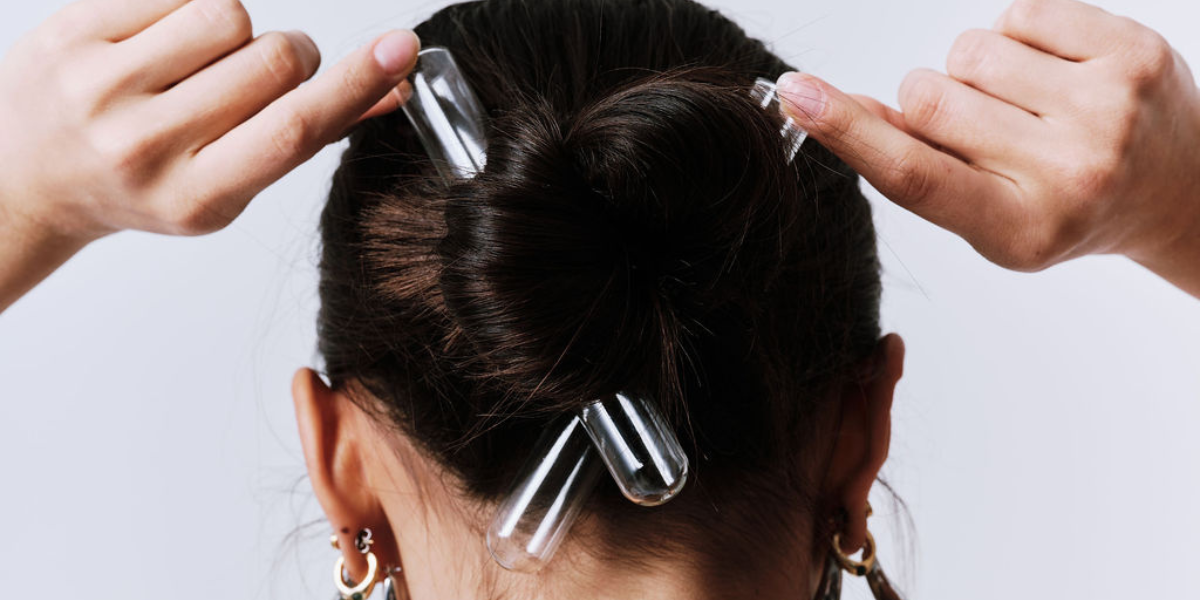
5th September, 2025
Heat Styling: How to Protect Hair From Damage
Written by: Dr Sibel Emilie Huet | Reviewed by: Dr Aamna Adel

Written by
Dr Sibel Emilie Huet
Junior doctor
Content writer

Reviewed by
Dr Aamna Adel
Consultant dermatologist
Chief editor/writer
In This Article
We all love that freshly styled, glossy, bouncy hair feeling. But the reality is - heat can seriously mess with your strands. From breakage and dullness to dryness and split ends, heat damage is real.
But don’t worry - we’re not here to tell you to ditch your favourite straightener or curling wand. We’re here to explain how heat affects your hair, why some hair types are more vulnerable, and what you can do to protect hair from heat damage while still enjoying a great style. Whether it’s by using a hair serum, heat protectant - or just simply washing smarter.
Let’s dive into your most-asked questions.
What is Heat, and How Does it Actually Affect Your Hair?
In haircare, heat is simply energy transferred to your hair shaft - whether it’s from your styling tools, a blowdryer, or even just the sun.
There are three key sources of heat that can affect your hair:
-
Thermal styling: This is when tools like straighteners, curling wands, and hot combs come into direct contact with your hair at high temperatures. These tools can cause the most intense damage, especially when used frequently or without protection.
-
Blow drying: Blowdryers don’t directly touch the hair, and the heat is more diffused - especially when used at appropriate settings or with a diffuser. But over time, even blowdrying can take its toll.
-
Environmental heat: When the sun is out and it’s hot and humid, your hair feels it too. UV rays and heat can break down your hair’s structure and affect your scalp health, especially with regular exposure.

Why Doesn’t My Hair Handle Heat Like Other People’s?
It all comes down to keratin, the protein that makes up most of your hair. Keratin gives your hair strength, structure, and elasticity - and acts like a barrier against external damage.
But here’s the interesting bit: depending on your ethnicity, genetics, and even your environment, the structure of your keratin is slightly different - and that’s what gives each person their unique texture. It also explains why hair reacts differently to heat and humidity.
-
Afro-textured hair, for example, has an internal coiled structure with more cuticle layers. That gives it a bit more resistance to heat - it takes higher temps to cause visible damage.
-
Fine or straight hair has fewer protective layers and a smoother surface. That means heat can penetrate quickly, making it more prone to damage even at lower temperatures (2). So while one person might crank their straightener up to 200°C with no obvious issue, that same heat level could cause breakage in someone else’s hair.
The takeaway? Know your hair type and treat it accordingly.
What’s Happening to My Hair on a Cellular Level?
Let’s break it down simply.
Your hair is made up of keratin - but keratin isn’t just sitting there on its own. It’s held together by bonds that give your hair its shape and strength. There are three types:
-
Hydrogen bonds are the weakest and can be broken just by water or heat around 60°C. This is why blowdrying or using rollers can temporarily change your hair shape.
-
Ionic bonds help hold the shaft structure together and are sensitive to high pH levels (like in chemical relaxers) and higher heat.
-
Disulfide bonds are the strongest - they determine whether your hair is straight, curly, or coily. These only break at very high temps (above 150–180°C) or during chemical treatments like perming or relaxing. Once broken, they don’t bounce back - the damage can be permanent.
-
When you overdo it with heat, you start breaking down these bonds. Over time, that leads to brittle, weak, dull hair that struggles to hold moisture.
What Does Heat Damaged Hair Look Like?
If you’re starting to worry that your hair might already be suffering, here are a few signs to look for:
-
It’s lost its shine
-
Feels rough or straw-like
-
Gets frizzy more easily
-
Snaps when you brush or style
-
Split ends are showing up more often
If you’re nodding along, don’t stress. There’s plenty you can do to minimise further damage and start rebuilding your hair’s strength.

How do I protect my hair from heat damage?
Glad you asked. Here are some practical tips from our founder and renowned dermatologist, Aamna Adel, to keep your hair looking and feeling healthy - even if you use heat tools.
1. Use a heat protectant spray - always
Think of heat protectant sprays like sunscreen for your hair. They form a light layer that slows how fast heat travels through your strands and helps distribute it more evenly. This prevents hot spots that lead to breakage, frizz, and dullness.
Many also contain oils or vitamins to help nourish your hair - so you’re protecting and conditioning in one go.
2. SPF your scalp
Yup, your scalp is skin - and it’s just as prone to sunburn. The parting line is particularly vulnerable, especially if your hair is fine or thinning.
Long-term sun exposure without protection can lead to dryness, irritation, and more seriously, increase the risk of skin cancer. Use lightweight scalp SPFs or sprays with a non-greasy texture. And don’t underestimate a cute sun hat - fashion and function in one.
3. Cool it down
You don’t need to crank your straightener up to 230°C. Most hair types only need about 150–180°C to style effectively. Higher than that, and you’re breaking down disulfide bonds unnecessarily.
Check your heat tool settings - and if it doesn’t have adjustable temperatures, it might be time for an upgrade.
4. Never style wet hair
It sounds obvious, but using hot tools on damp or wet hair can cause serious damage. Water inside the hair shaft heats up too fast and forms air bubbles - a condition known as bubble hair - making strands weak and prone to snapping.
Always let your hair fully dry before styling.
5. ...but don’t air-dry forever
Surprisingly, leaving your hair wet for too long can be just as damaging. Wet hair swells and stretches, weakening the shaft over time.
Blowdrying on a low heat setting can actually help reduce that risk by drying hair faster without blasting it with high temps.
6. Give your hair a break
Using heat tools every day? Try spacing things out. Even just a day or two in between can make a big difference.
Repeated heat exposure doesn’t just weaken the outer cuticle - it breaks down the protein bonds inside your hair, making it more fragile. This can even lead to something called “bubble hair,” where air pockets form inside the hair shaft from too much heat.
7. Switch up your styles
Protective hairstyles like loose braids, buns, twists, and curls can give your hair a break from heat. Avoid styles that tug at your roots, like very tight ponytails or slicked-back buns, which can lead to traction alopecia (hair loss caused by tension).
Use style-preserving products like shape sprays, silk scrunchies, or light gels to help stretch the time between heat sessions.
8. Use the right tools
Not all styling tools are made equal. Look for:
-
Ceramic plates for even heat distribution and less frizz
-
Titanium plates if you’ve got thick or coarse hair
-
Adjustable temperature settings - always
High price doesn’t always mean better, but investing in quality tools will help protect your hair long-term .
In summary
Stronger, shinier hair doesn’t mean quitting heat - it just means using it more mindfully. With a few easy swaps and some TLC, you can keep your hair healthy, resilient, and still totally style-able.
Your best hair days aren’t behind you - they’re just a few smarter choices away.
For answers to other questions you might have about hair care, check out our blog page.




